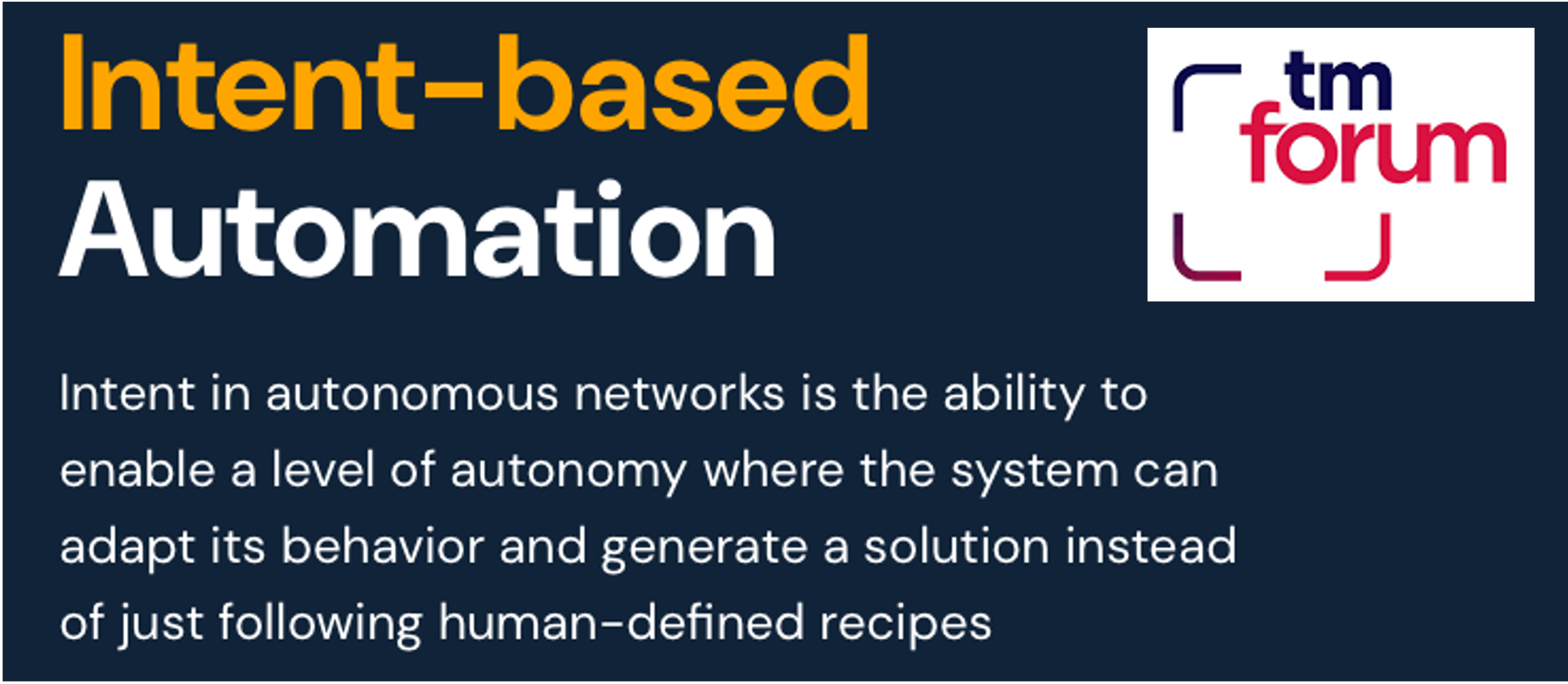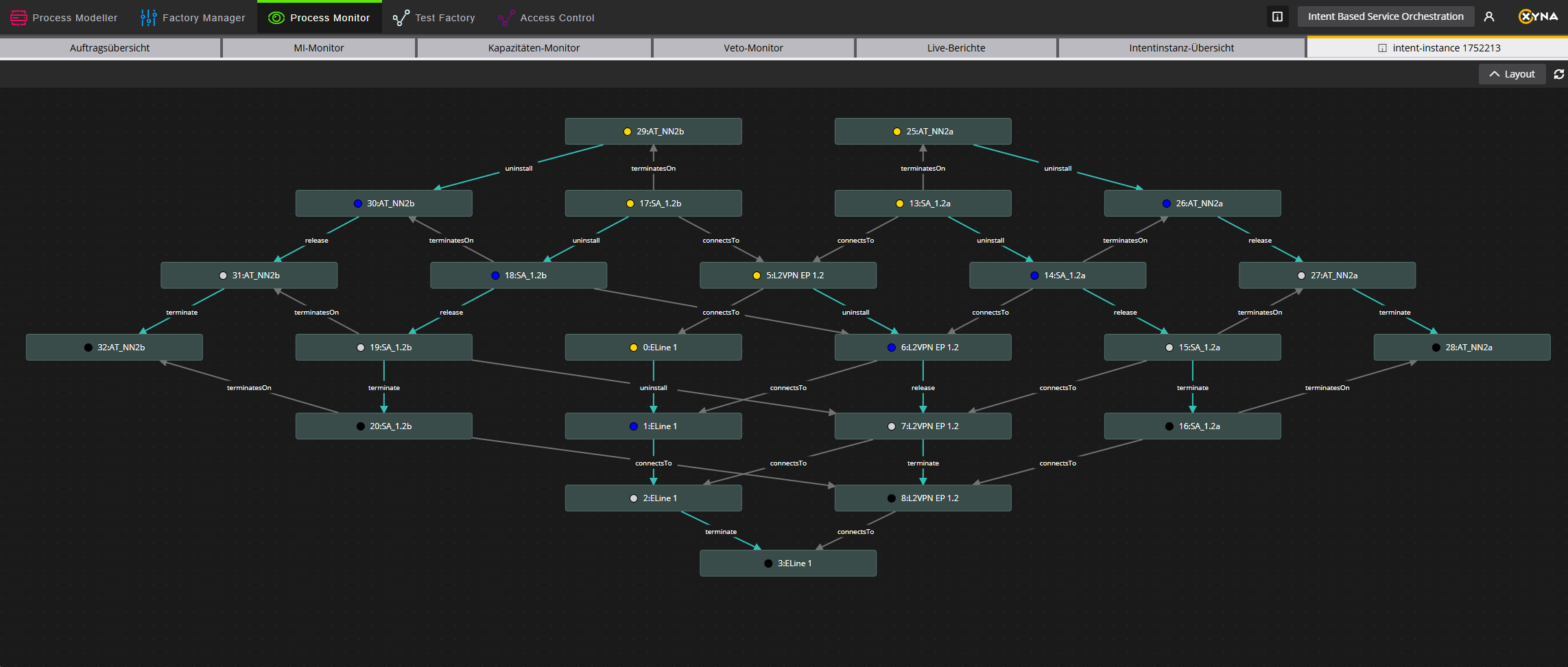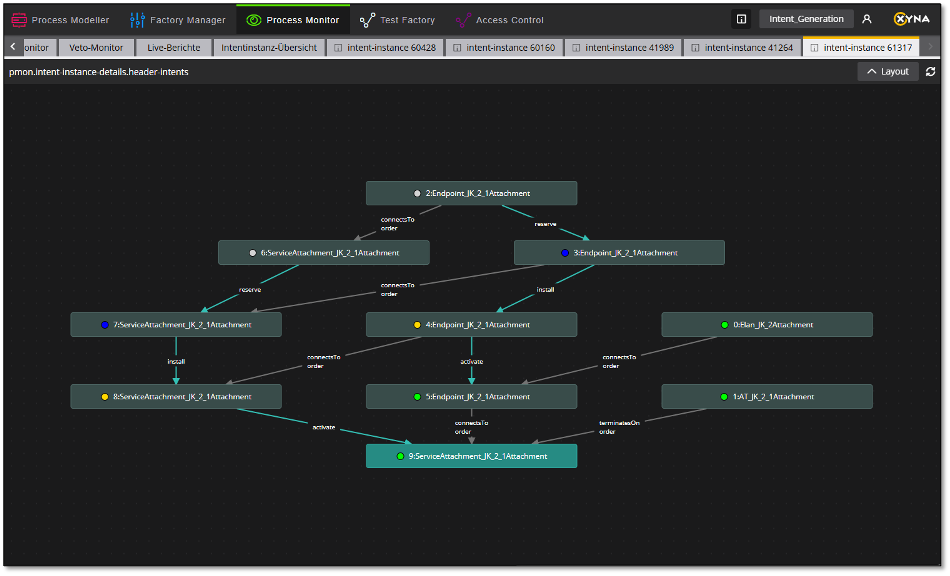Intent-based Orchestration
Xyna Bulletin #25
Dear friends, partners, and customers of Xyna,
Today you are holding issue #25 of our bulletin in your hands. You may think that's a lot or a little, but when we started this series a good two years ago, it wasn't clear whether we would even be able to reach our audience with a traditional email newsletter in the age of TikTok, Instagram, and the like. However, we continue to receive positive feedback from our readers – and are therefore looking forward to the next 25 issues with this anniversary issue 🥳
In terms of content, we're sharing some impressions of the latest Xyna feature: the visualization of execution graphs for intent-based orchestration processes.
Enjoy reading!
::
Intent-based Automation & Orchestration with Xyna
It's safe to assume that most of the recipients of this letter are already well aware of the benefits and hopes that lie in the paradigm shift toward intent-based networking. Therefore, just a brief introduction:
Currently, services are mostly introduced into the network using process-, script-, and/or rule-based configuration systems. Every new connection, every policy, every change is planned, commissioned, and implemented in detail in the familiar BSS-OSS chains. The decision is usually made "high up" in the system chain as to HOW (imperative) the configuration change required for the desired service will look and how it will be applied to the participating network elements.
Intent-based network automation breaks with this principle: instead of assigning specific specifications to the service, systems in the commerce management sphere, aka CRM/BSS, formulate abstract intentions about WHAT should be set up (declaratively): For example, roughly simplified, the intent is: "Provide a secure, low-latency connection between two data centers." A suitable orchestration system then takes over the translation into configurations as "deep down" as possible, implements them automatically, and continuously monitors whether the desired result is achieved.

Ideally, IbO is supplemented by concepts such as dynamic learning and service catalogs, from which corresponding rules and graphs for automated generation can be derived. Appropriate keywords from the TM Forum universe are TMF633 / TMF638 or the concept paper IG1253 Intent in Autonomous Networks with the TMF921 standard for intent management. Intent-based network orchestration is a central component of the TM Forum's strategic initiative for autonomous networks.
Such a principle is also known in other IT areas. A popular example is the Terraform tool, which declaratively describes entire IT infrastructures and deploys them automatically.
And because we've been able to support interesting customer projects in this context over the past few months, which focus on implementing such IbO systems, Xyna has also learned a lot in this area: for example, the Xyna Scheduler (part of the server) can process appropriately prepared intents using the order recurrence function – and the Xyna Process Monitor can, and this is truly new, also visualize the generated graphs:

This is not only nice to look at, but also really helpful when it comes to troubleshooting, traceability, and documentation of intent-based configuration processes. The user can see dependencies, status transitions, and inventory activities; and thanks to the implicit rollback capability of all calculated steps, use cases such as cancellation, termination, even in late project phases, or in-flight changes are very easy to implement.

Conclusion: Intent-based network automation is one of the key strategic steps toward autonomous networks in the coming years – and anyone interested in experiencing Xyna for IbO live and in color is welcome to contact us anytime. We're always happy to present the latest features and share them with the world!